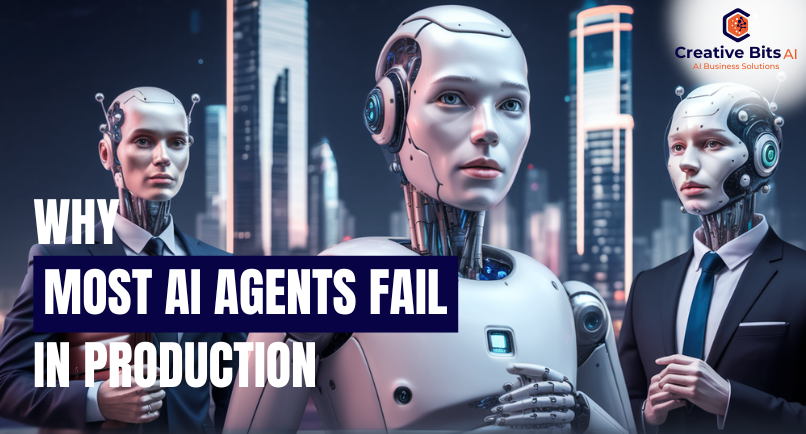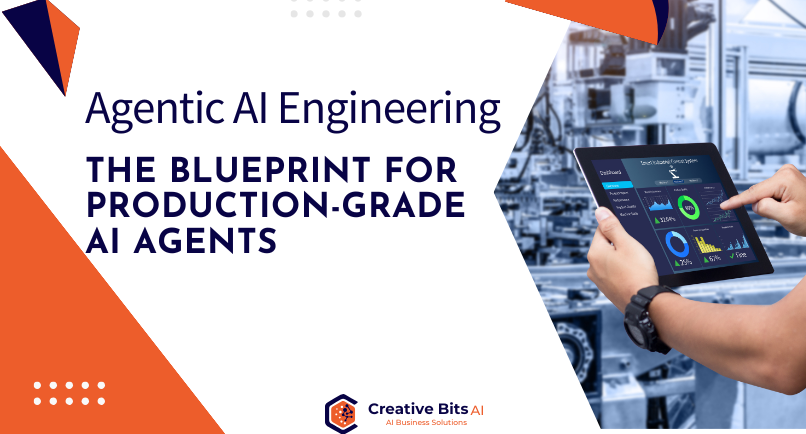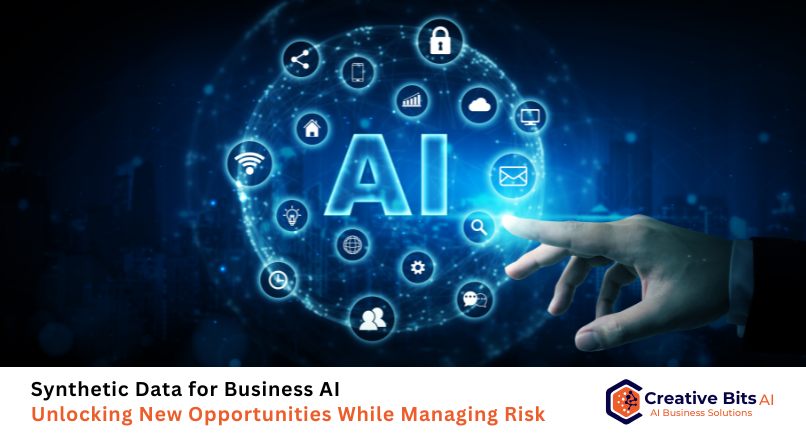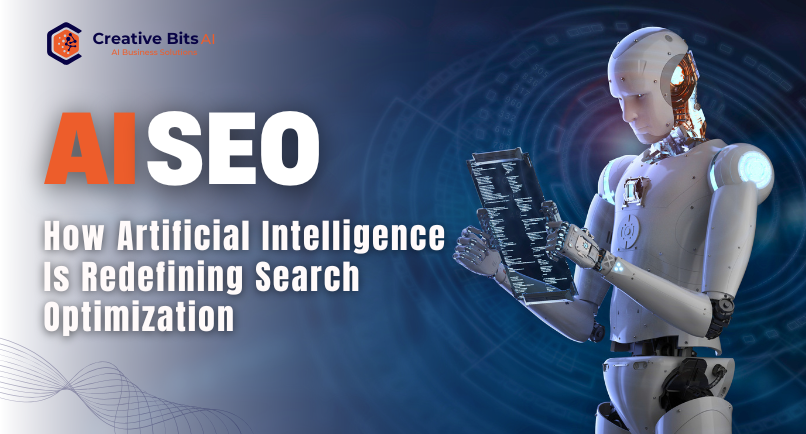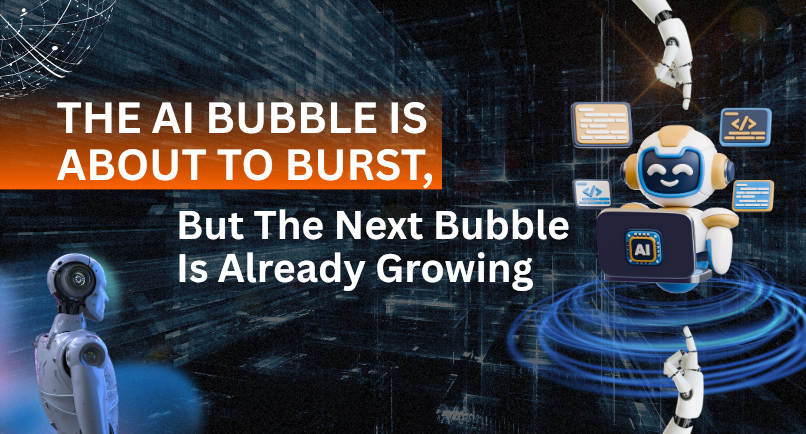Artificial Intelligence (AI) has moved swiftly from being just ideas on paper to becoming an essential tool for businesses. However, despite the buzz around AI agents, most of them don’t perform as well once they’re actually used in real-world settings. Whether they’re used for customer service, making logistics easier, or making quick decisions in real-time. The problem isn’t usually with the AI algorithms themselves, but rather with how they’re created, taught, and connected to actual systems that run businesses.
Industry data shows there’s a big gap here. Gartner’s 2025 AI Deployment Survey found that almost 80% of enterprise AI projects don’t go past the pilot stage, and even among those that do, less than 40% work well in real-world use. This leads to confusion and frustration. The reasons aren’t usually just technical. More often, they come from weak databases, poor planning for growth, or not having enough monitoring after the system is live. In short, the problems with AI agents in production aren’t about how smart they are — they’re about how well they’re built and managed.
Understanding Why AI Agents Fail
AI systems often don’t work as expected because of reasons that are easy to predict. A big problem is that they rely too much on data that’s not very realistic. When these systems are trained using limited or cleaned-up data, they have a hard time dealing with real-world situations. An AI that does well in a controlled setting can struggle when faced with incomplete information, unclear requests, or shifts in how people behave. This leads to a big drop in how well it performs, and people start to lose confidence in it.
Another common problem is when the infrastructure doesn’t match the needs of the AI system. Many AI models are built in controlled settings that don’t reflect the real-world conditions they will face. When these systems are put into use, they run into difficulties like slow performance, incompatible interfaces, or limited resources, which seriously impact their effectiveness. A study by IDC (2024) found that almost half of all AI projects that fail do so because of poor infrastructure and weak deployment strategies.
Governance is a major weakness in AI. Without constant monitoring, AI systems can lose focus. Over time, as markets and user behaviors change, the performance of AI models can decline. Without strong feedback mechanisms, small mistakes can grow bigger. Ethical issues also play a role: if the data used to train AI is biased or if the decision-making process is unclear, it can lead to violations of rules, harm to the company’s reputation, and a loss of trust from those involved. According to PwC’s Responsible AI Report (2024), being transparent and regularly checking AI systems is no longer something optional—AI needs to be successful in the long run.
Finally, most AI projects fail because they overlook the human element. Teams often introduce AI without considering how it works with people. When workers don’t understand or trust the system, they either ignore it or stop using it entirely. Real success isn’t about replacing people, but about helping them make better decisions.
From Failure to Framework – Building Production-Ready AI Agents
Creating AI agents that work well in real-world settings needs a comprehensive, full-cycle approach that views model design, integration, and monitoring as connected parts of a single process. The first step is making sure the data is accurate and truly representative. Top-performing AI agents aren’t just trained on clean data—they’re trained on realistic datasets that include edge cases, noise, and unclear situations. Methods like generating synthetic data and using active learning can help create scenarios that are hard to encounter, which in turn makes the AI more adaptable and reliable.
Next, infrastructure readiness needs to be a key part of the design process, not something added later. Production-ready AI agents need scalable architectures—usually containerized or serverless setups—that can manage real-time inference with low latency. Cloud-native platforms such as AWS SageMaker or Azure Machine Learning offer deployment pipelines that include version control, the ability to roll back changes, and flexible resource allocation. These features help ensure the AI agent can handle sudden increases in demand and keep performance stable.

Another key aspect is ongoing monitoring. After a model is deployed, it needs to be regularly checked for changes in accuracy, new biases that may appear, and overall system performance, like uptime or response time. MLOps tools, which are an advanced version of DevOps for machine learning, help automate model retraining, keep track of different models, and spot issues early on. According to Google Cloud’s State of MLOps Report (2024), companies that use continuous model monitoring saw a 60% improvement in production reliability and cut unplanned downtime in half.
Ethical governance is just as important. Clear explanations of how models work, proper documentation, and regular compliance checks are essential, especially in fields like finance or healthcare. AI systems that can explain their decisions and pass audits tend to work more effectively and are more likely to be accepted by organizations.
Finally, AI agents work best when they are designed with people in mind. This means creating systems that give users more control and help them understand what’s happening. Clear explanations, ways for users to give input, and training sessions help build trust and make teamwork easier. A 2024 Deloitte study on AI use showed that projects developed with ongoing human input were 2.3 times more likely to bring in positive returns compared to those that operate as closed systems.
Lessons from the Field – When AI Agents Succeed
Several top companies have shown how careful engineering can make AI agents really effective in real-world use. In online shopping, AI systems that suggest products and keep learning from real-time sales data do much better than old-fashioned models. They increase the number of clicks and purchases by 35%, according to Shopify’s 2024 AI Performance Benchmark. In delivery services, UPS uses AI to plan routes automatically. These systems take into account traffic and weather conditions in real time, which helps them change routes as needed. This has saved millions of miles each year.

Closer to home, Creative Bits AI’s work with enterprise clients follows these same ideas. By adding AI agents to their current business setups—whether for automated screening, smart analytics, or better product listings—we make sure that each project is easy to scale, track, and improve over time. The outcome isn’t just more efficient systems, but systems that keep getting better and better.
The Creative Bits AI Approach
At Creative Bits AI, we think that true success with AI isn’t about using the most complex algorithms—it’s about creating systems that work reliably, are easy to understand, and can grow with your business. We start by offering AI consulting and strategy services, where we check if your organization is ready, find the best ways to use AI, and set clear goals to measure success. Once that’s done, our AI and machine learning teams build tailored models that are carefully adjusted to fit your data and how your business operates.
Once the models are created, our integration specialists make sure they connect smoothly with the company’s current systems—whether using APIs, microservices, or custom connectors. We also put in place strong monitoring systems that keep track of how well the agents are performing and update the models when their accuracy starts to drop. This helps ensure that every AI agent we develop stays dependable, follows the rules, and can keep up with future needs.
CBAI works with companies like OpenAI, AWS (Partner), and AppGallop to use the most up-to-date AI tools. This helps us build solutions that can grow with your business and keep your data safe. Our approaches are tailored to fit your specific needs and help you reach your goals.
Building AI Agents That Endure
Most AI systems fail in real-world use, not because AI itself has limits, but because they’re built with quick fixes instead of proper care. When models are created without realistic data, clear rules, or human checks, they struggle when faced with the real messiness of everyday tasks. But if they’re developed with care, scaled properly, and guided by ethical standards, AI can become a valuable partner—helping people do better work without taking their place.
At Creative Bits AI, we develop AI systems that go beyond just working in demos—they perform well in real-world use. Whether it’s predictive analytics or automated decision-making tools, our methods guarantee dependable results, clear explanations, and real value for your business. If your company is ready to turn AI possibilities into long-term success, let’s create the next level of strong, reliable AI systems together.
